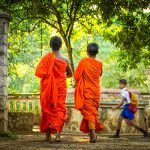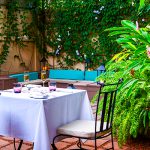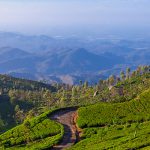INSIDE SRI LANKA – A monthly insider’s report by Royston Ellis. January 2014.
The Flowering of the Lotus Pond Theatre
The inaugural ceremony of the Commonwealth Heads of Government Meeting (CHOGM) held in Colombo in November 2013 brought to the world’s attention the magnificent Nelum Pokuna (Lotus Pond) Mahinda Rajapaksa Theatre.
This spectacular building, familiarly known as Nelum Pokuna (Lotus Pond) Theatre, began life as the National Performing Arts Theatre, prior to its renaming and opening in December 2011.
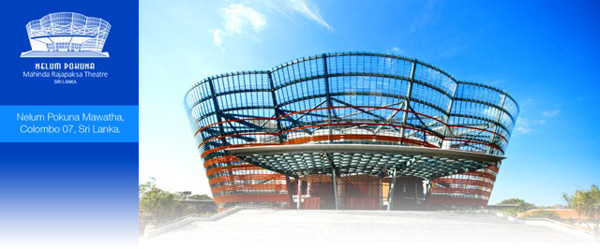
The architecture of the building is inspired by the 12th-century Nelum Pokuna (Lotus Pond) in Polonnaruwa. Built by King Parakramabahu the Great, Polonnaruwa’s Nelum Pokuna is shaped as a stylised eight-petal lotus flower. The theatre building is an extraordinary sight complementing the Colombo skyline of high-rise hotels and apartment blocks still under construction. At first glance it seems to be under construction itself, due to the skeletal style of architecture, representing a flowering lotus.
It was designed by the Beijing Institute of Architectural Designs and built by Sri Lankan craftsmen thanks to a grant from the People’s Republic of China. The building spreads over 14,000 square metres of floor area and the theatre is equipped with ultra modern facilities; an auditorium with 1,288 seats, a library, and training facilities.
The whole theatre complex, or just part of it, is available for hire for local and foreign stage shows as well as for meeting and conventions. According to a press release, it is envisaged that the Nelum Pokuna Mahinda Rajapaska Theatre will bring in foreign investment through its usage by international artistes and will play a vital role in promoting tourism to Sri Lanka
The Green Flash
Sri Lanka is one of the few places in the world where you can observe the legendary Green Flash. No, this is not the name of an exotic cocktail served on the terrace of a beach hotel; it’s something that if you keep your eyes open and the horizon is clear, you can see as the sun sets.
The first requirement is a cloudless sky and an unrestricted view of the ocean and the horizon from Sri Lanka’s west coast. The Green Flash can be spotted as the sun sinks towards the horizon in a flaming orange ball. Watch carefully, but be careful not to blink or be dazzled by the sun otherwise you’ll miss the flash.
It’s a sudden – and very short – pinprick of green emphasising the majestic beauty of the setting sun’s bright orb. It’s a rare sight, but it can be seen from hot spots along the west coast; perhaps from the beach at Negombo, from Colombo’s Galle Face Green promenade, or from sandy coves along the west coast from Kalutara to Galle.
The scientific explanation for this almost mythical phenomenon describes it as being caused by a scattering of light by molecules in the atmosphere; light refracted by air.
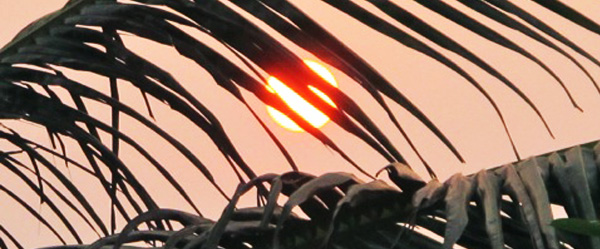
If you’re not lucky enough to witness the Green Flash, don’t worry. Even when there are clouds gathering along the horizon, watching the sun descend gracefully at dusk is an inspiring experience.
Canal Cruising
In October 2013 I reported on the opening of the Hamilton Canal; last month I returned for a cruise along the waterways. An entrepreneur has set up a motorboat service with trained crews to operate boats for passengers who want to take a cruise along the canal or up the adjoining Kelani River.
The boat service is based on the northern bank of the Hamilton Canal by the new suspension footbridge at Hekitta Junction, Hendala, Wattala. It is easily reached on the way to or from the airport but on the old route, not the new Airport Expressway.
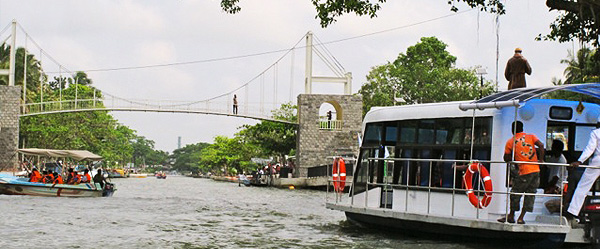
As well as boats for cruising, a floating restaurant with a single 45hp outboard motor and with chrome tables and chairs fixed to the deck can also be hired. There are glass panels at the side that can be opened to let the breeze flow through, and a high roof. There are lights on board so the boat can be chartered for an evening cocktail cruise, as well as for daytime picnics.
With fees starting at Rs1,000 for a group of five to cruise, it represents remarkable value for exploring the undiscovered (by tourists that is) waterways. www.hamiltonboatsservices.com
Wild Life
However, Sri Lanka is rich in wild life, whether it’s brightly coloured birds and butterflies in village gardens, or wild monkeys romping on roofs. That’s what I saw when I looked out of my attic window the other morning.
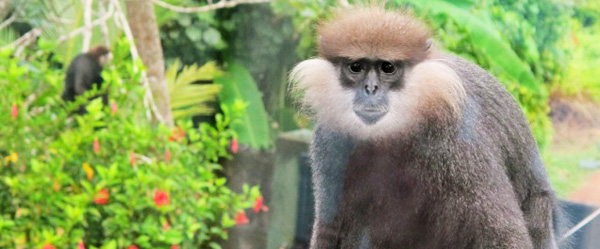
Even as you travel around Sri Lanka you can spot something unexpected, like these two elephants passing a tea factory in the hill country. They were probably being transported to take part in a village pageant.
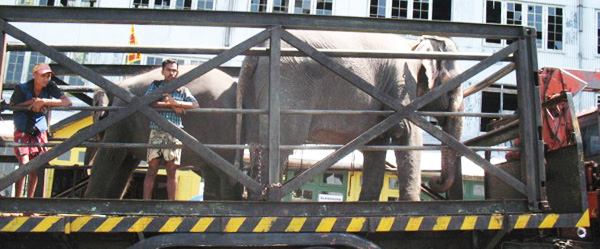
Books on Sri Lanka
There are several guidebooks in English about Sri Lanka so whether you’re a backpacker on a low budget or a retiree wanting accurate and comprehensive information for a leisurely visit, you’re bound to find one that suits you. Although I have been living in Sri Lanka since 1980 and wrote the Bradt Travel Guides to Mauritius, the Maldives and India (by rail), I had been here for 14 years before I wrote my first guide to this country. That was about how to get around the Sri Lanka by rail.
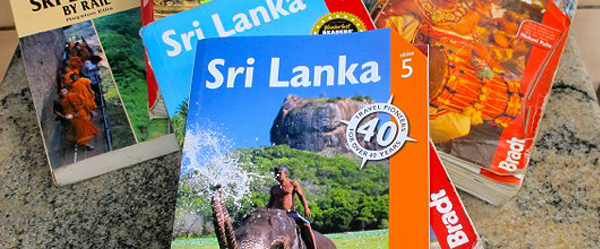
I followed this with the first edition of Sri Lanka published by Bradt in 2002. This month (January 2014) the fifth edition is being published by Bradt. It includes new chapters on the east coast attractions of Passikudah and Batticaloa as well as details of the Jaffna Peninsula and staying in jail there (now a hotel). I am grateful to the team at Bradt for taking so much care in the book’s editing, and in supplying detailed maps as well as the comprehensive index. I hope readers find the Guide not only useful but entertaining too.
British resident of Sri Lanka, Royston Ellis, is an erstwhile beat poet (his book Gone Man Squared was published in 2013 by Kicks Books of the USA) and travel writer. His weekly blog about Sri Lanka is available by free subscription from www.roystonellis.com
